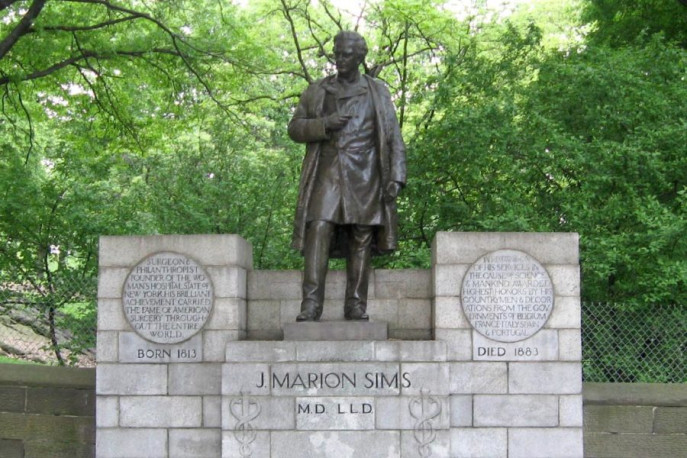
by: Ellen C. Caldwell
for JSTOR Daily
What are we to make of memorials celebrating historical figures who stood for concepts we now find morally ambiguous? A recent episode of NPR’s Hidden Brainbrings up the question of such contested memorials via the story of the “father of gynecology,” Dr. James Marion Sims. Considering his oft-forgotten test subjects, his story highlights the challenge of how we memorialize the complicated past.
From 1845 to 1849, Sims conducted a series of experimental surgeries on enslaved African American female subjects in order to help treat and come up with a repair for a condition called vesico-vaginal fistula (VVF), a painful condition resulting from obstructed labor. At least ten slave women were part of Sims’ documented experimental procedures, though only three of these women are named: Lucy, Betsey, and Anarcha.
Dr. James Marion Sims has long been a contested figure. Durrenda Ojanuga writes, “The story of Dr. Sims’ discovery of a successful surgical technique for the cure of VVF…is a story of pain and suffering.” Contemporary readers must reconsider Sims’ legacy in light of his human experimentation on African American slaves—experimentation which arguably earned him his much celebrated role as the father of gynecology, resulting in public commemorative statues in New York’s Central Park and in Columbia, South Carolina…
